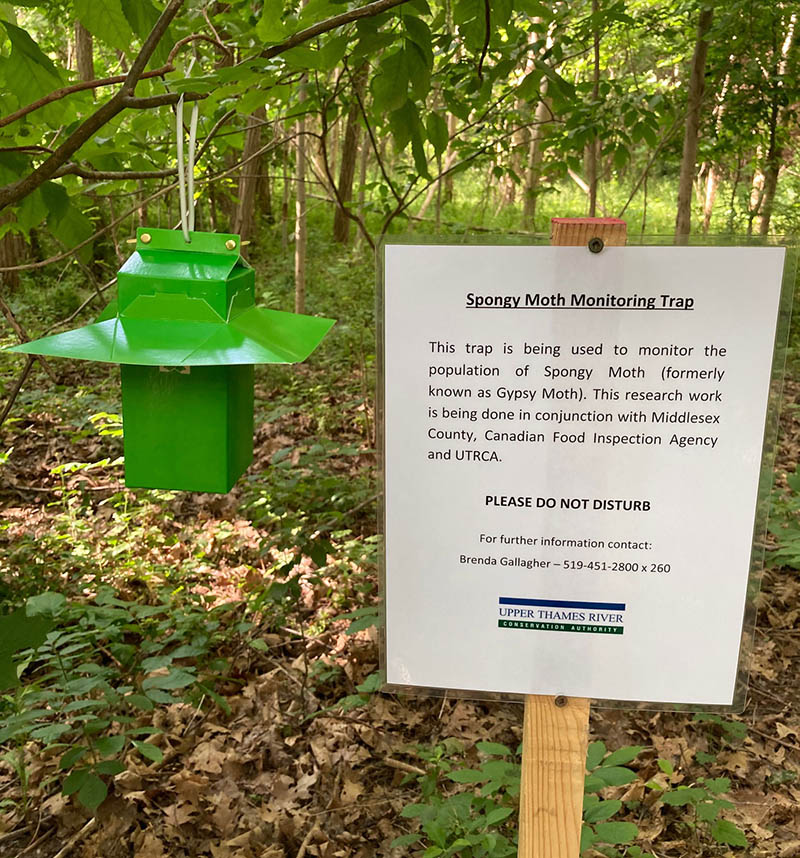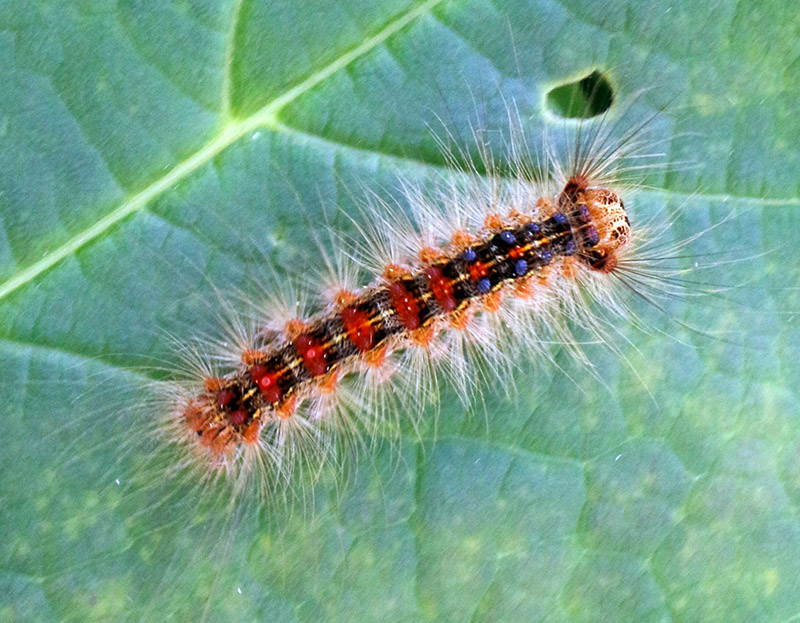UTRCA staff Monitoring for Spongy Moth (UTRCA weekly, July 29, 2022)
In mid-June, Upper Thames River Conservation Authority (UTRCA) staff set up traps to monitor the population of Spongy Moth (formerly known as Gypsy Moth). Two traps were assembled in Fanshawe Conservation Area and four in Environmentally Significant Areas (ESAs) in London. The UTRCA is conducting the research in conjunction with the County of Middlesex and the Canadian Food Inspection Agency.

The larvae of this exotic forest pest feed on the leaves of oak, aspen, and many other trees. During a Spongy Moth outbreak, there can be so many caterpillars that they strip all the leaves off of some trees by mid-summer.
Black-billed and Yellow-billed Cuckoos have been observed eating the Spongy Moth larvae but they don’t eat enough to bring a population outbreak under control. The caterpillars have long hairs that can irritate the skin around a bird’s eyes, and help protect the larvae from predation.

Spongy Moth caterpillars are vulnerable to a virus and a fungus. Nuclear Polyhedrosis Virus (NPV) is a naturally occurring virus that only infects this species and spreads quickly from infected to noninfected larvae. Once the virus builds up in a population, it can cause high levels of caterpillar mortality and outbreaks of Spongy Moth usually collapse after two to four years. Dead and dying caterpillars hanging limply from trunks or branches in an upside down “V” show NPV is at work.
Entomophaga maimaiga is a fungus native to Japan that was introduced into the United States to help control Spongy Moth. The caterpillars ingest the fungus while they are feeding and can perish within weeks. This fungus appears to be influenced by rainfall and its natural spread likely plays a larger role during wet years.
The traps in Fanshawe CA and the ESAs are not intended to control the moth but rather are a monitoring tool to determine the abundance and magnitude of the populations in Middlesex County. Staff checked the traps in mid-July and found an average of 100 to 120 moths per trap. They will check again in mid-September. This data will help determine if the virus and/or fungus are having any impact on the local Spongy Moth population.

